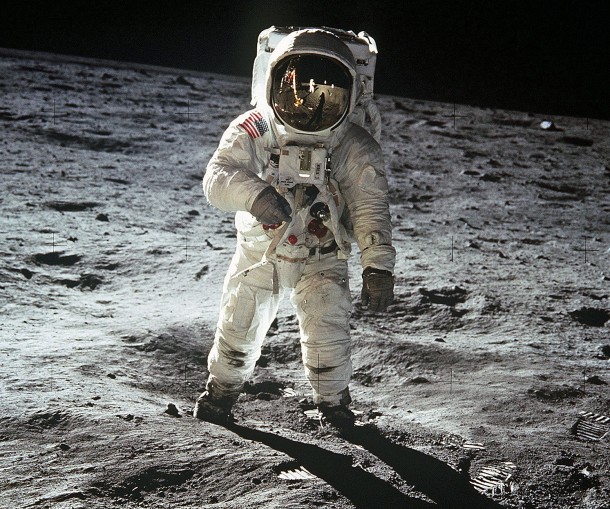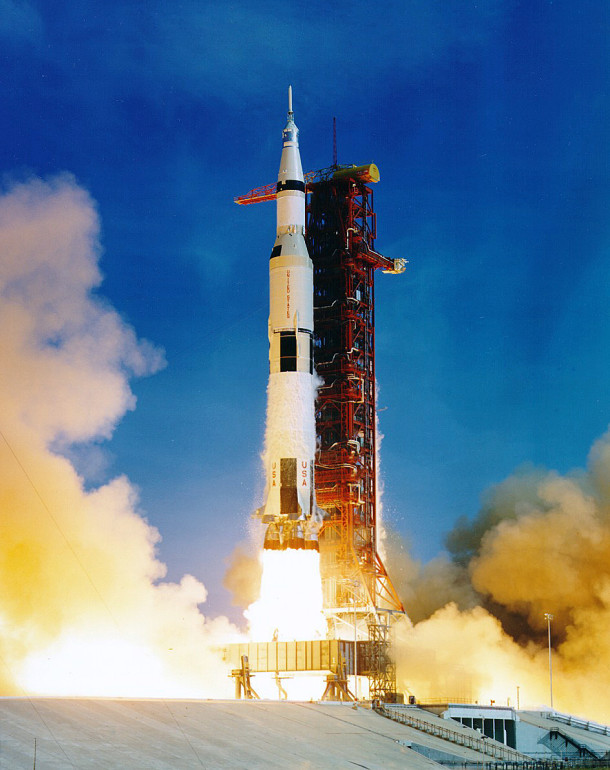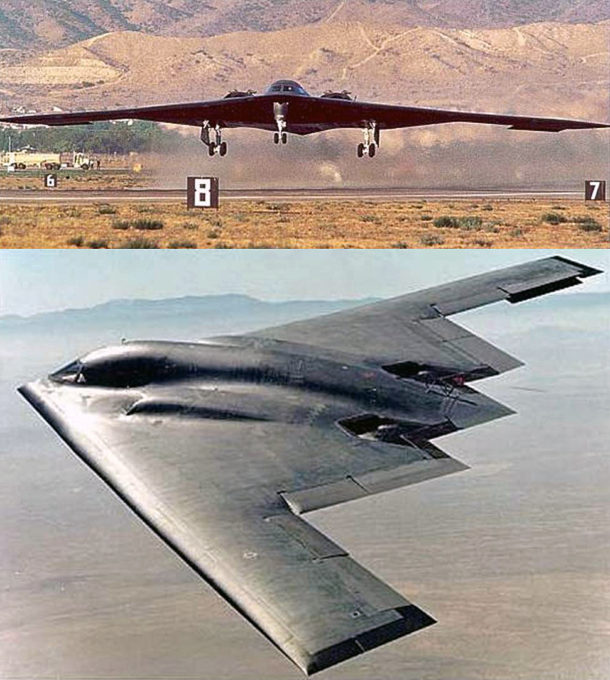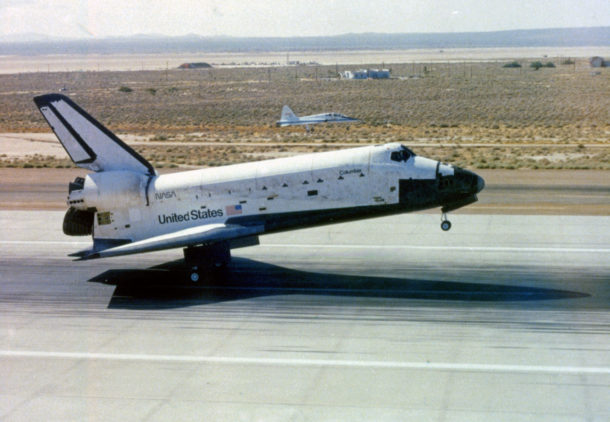
Sixty-one years ago to the day, Marine Lieutenant Colonel William Henry Rankin was forced to eject from his Vought F8U Crusader (SN 143696) when the aircraft’s turbojet engine seized at 47,000 feet. Unfortunately, Rankin’s post-bailout descent took him into a powerful thunderstorm that subjected the pilot to a cacophony of life-threatening horrors. Forty minutes after exiting his aircraft, Rankin landed in a forested area some 65 miles from his point of ejection.
Around 1700 hours EDT on Sunday, 26 July 1959, a two-ship formation of Marine F8U Crusaders departed South Weymouth Massachusetts bound for Beaufort, South Carolina. William Rankin, call sign TIGER ONE, was the formation commander with Marine Lieutenant Herbert Nolan, call sign TIGER TWO, flying wing. Since the 800 mile trip was considered routine and expected to take only 70 minutes, both airmen were dressed in only a light summer flying suit.
En-route to Beaufort, the Marine aviators encountered thunderstorm activity in the Norfolk, Virginia area. With thunderheads rising to around 44,000 feet, they ascended to 48,000 feet as a storm avoidance measure. Suddenly, Rankin heard an ominous thump and grinding noises coming from his engine. This was followed by another thump whereupon the red FIRE warning light began to glow. Rankin throttled back immediately. Perhaps he could save his engine and limp back home. Moments later that faint hope was dashed when engine power plummeted to zero. His engine had seized.
Working quickly, the aviator reached to deploy his Ram Air Turbine (RAT) in an attempt to maintain minimum levels of electrical and hydraulic power. Alarmingly, the RAT handle broke off in his hand! Quickly assessing his limited options, Rankin made the only choice that gave him a decent chance of survival; he ejected. Ejection occurred with his Crusader in a slight climb and a speed of several hundred miles per hours. The last altimeter reading Rankin saw before leaving the cockpit was 47,000 feet. The time of ejection was 1800 hours EDT.
Ejection from an aircraft is a physically brutal and dangerous event. It became even more so for Rankin as he instantly went from +75F in the cockpit to –70F outside air temperature. At 47,000 feet, the ambient static pressure is only 13% of the sea level value. Thus, the pilot simultaneously experienced rapid-onset frostbite and sudden decompression. The latter caused his abdomen to grotesquely swell several times its normal size and for blood to come out of his eyes, nose, ears, and mouth. The pain of atmospheric exposure was beyond excruciating.
As Rankin free-fell towards the dark storm clouds below, he tumbled, spun, and cart-wheeled wildly through the sky. The rotation-induced centrifugal force was so great that he was unable to move his limbs making him look much like a starfish. It suddenly occurred to Rankin that he needed to be breathing the oxygen in his bailout bottle to maintain consciousness and avoid possible brain damage. However, his oxygen mask was not in place and kept hitting him in the face as he spun. Entering the wispy white clouds at the top of the thunderhead, Rankin’s spin rate began to decrease to the point where he could now move his limbs. This allowed him to grab and hook-up his face mask whereupon wonderful life-giving oxygen began to flow into his lungs.
Rankin’s parachute was designed to open at 10,000 feet. After what seemed like an eternity of falling, his parachute deployed and blossomed as intended. Parachute deployment was quite violent and rattled Rankin’s battered body. He strained to see the canopy, but it was too dark to pick it out within the massive storm cell. Happily, Rankin could see and feel the taut risers which were connected to the canopy and he surmised that he indeed had a good chute. Things were starting to look up a bit for the battered Marine aviator.
What Rankin did not know at the time was that his parachute actually deployed at an altitude that was much higher than intended; somewhere between 15,000 and 20,000 feet. Not good. The resulting increased descent time would keep him in the storm longer. However, other than a little turbulence, the first minute or so on his chute did not portend what Rankin was about to experience.
With an alarming suddenness, Rankin was hit by a massive wall of turbulent air. It felt to him like he had hit a concrete wall. He went soaring up thousands of feet in a huge updraft. When the energy of the updraft finally dissipated, he started to descend again. Descent was worst than ascent. The pilot was buffeted and rattled violently in all directions. In Rankin’s words, he was “stretched, slammed, and pounded.” The rapid changes in g-force magnitude and direction caused him to vomit over and over. This terrible up-and-down process was repeated more times than Rankin could count. In all of this, the pilot was absolutely amazed and supremely grateful that his parachute held together.
Deep within the bowels of the violent storm, dark and roiling clouds seethed about Rankin and his vulnerable parachute. Just when it seemed that things couldn’t get any tougher, they did! The culprits were lightning, thunder, rain, and hail. The lightning and thunder encompassed him completely about. The former was like thick, intensely luminous sheets of blue. The latter was a horrific rolling explosion that Rankin intensely felt more than he heard. This meteorological one-two punch came every 30 to 60 seconds.
Rankin was exposed to torrential rains throughout his time in the storm cell. However, there were moments in which the rain was so intense that he gasped for air and thought he literally would drown in the sky. Then hail began to pound him. Rankin later said that it seemed like it was raining baseballs. Multitudinous hailstone impacts left a mass of welts that covered his entire body. Rankin said that he thanked his Maker that he was still wearing his helmet. Without it, he was certain that severe head injury would have resulted.
Eventually, the massive storm let go of William Rankin. He landed in a forest in North Carolina; 65 miles from the point of ejection. His watch told him that his battle with nature had lasted 40 minutes. His jet crashed 20 miles away and was vaporized on impact. (Happily, no one on the ground was hurt.) The story of his being rescued will not be told here. Suffice it to say that Rankin fully recovered and ultimately returned to flying as a Marine aviator. He lived 50 more years and passed from this mortal sphere in 2009 at the age of 89.
As a footnote, the reader is highly encouraged to read William Rankin’s “The Man Who Rode the Thunder” (Prentice-Hall, 1960). By doing so, one will come to more fully understand and appreciate just what Marine Lieutenant Colonel William H. Rankin experienced that eventful day in 1959.

Fifty-one years ago today, the United States of America landed two men on the surface of the Moon. This feat marked the first time in history that men from the planet Earth set foot on another celestial body in the solar system.
The Apollo 11 Lunar Module Eagle landed in the Sea of Tranquility region of the Moon on Sunday, 20 July 1969 at 20:17:40 UTC. Less than seven hours later, Astronauts Neil A. Armstrong and Edwin E. Aldrin, Jr. became the first human beings to walk upon Earth’s closest neighbor. Fellow crew member Michael Collins orbited high overhead in the Command Module Columbia.
As Apollo 11 commander, Neil A. Armstrong was accorded the privilege of being the first man to step foot upon the Moon. As he did so, Armstrong spoke these words: “That’s one small step for Man; one giant leap for Mankind”. He had intended to say: “That’s one small step for ‘a’ man; one giant leap for Mankind”.
Armstrong and Aldrin explored their Sea of Tranquility landing site for about two and a half hours. Total lunar surface stay time was 22 hours and 37 minutes. The Apollo 11 crew left a plaque affixed to one of the legs of the Lunar Module’s descent stage which read: “Here Men From the Planet Earth First Set Foot Upon the Moon; July 1969, A.D. We Came in Peace for All Mankind”.
Following a successful lunar lift-off aboard the Eagle, Armstrong and Aldrin rejoined Collins in lunar orbit. Approximately seven hours later, the Apollo 11 crew rocketed out of lunar orbit to begin the quarter million mile journey back to Earth. Columbia splashed-down in the Pacific Ocean at 16:50:35 UTC on Thursday, 24 July 1969. Total mission time was 195 hours, 18 minutes, and 35 seconds.
With completion of the flight of Apollo 11, the United States of America fulfilled President John F. Kennedy’s 25 May 1961 call to land a man on the Moon and return him safely to the Earth before the decade of the 1960’s was out. It had taken 2,982 demanding days, a number of lives, and a great deal of national treasure to do so. “Mission Accomplished, Mr. President”.

Fifty-one years ago today, the epic flight of Apollo 11, the first mission to land men on the Moon, began with launch from the Kennedy Space Center (KSC) at Merritt Island, Florida. Nearly 1-million people gathered around America’s famous space complex to witness the historic event. An estimated 1-billion viewers worldwide watched the proceedings on television.
The names of the Apollo 11 crew are now legend: Mission Commander Neil A. Armstrong, Lunar Module Pilot Edwin E. Aldrin, Jr., and Command Module Pilot Michael Collins. Each astronaut was making his second spaceflight.
The overall Apollo 11 spacecraft weighed over 100,000 pounds and consisted of 3 major components: Command Module, Service Module, and Lunar Excursion Module (LEM). Out of American history came the names used to distinguish two of these components from one another. The Command Module was named Columbia, the feminine personification of America, while the Lunar Excursion Module received the appellation Eagle in honor of America’s national bird.
The Apollo-Saturn V launch stack measured 363-feet in length, had a maximum diameter of 33-feet, and weighed 6.7-milllion pounds at ignition of its five F-1 engines. The vehicle rose from the Earth on 7.7-million pounds of lift-off thrust.
The acoustic energy produced by the Saturn’s first stage propulsion system was unlike anything in common experience. The sound produced was like intense, continuous thunder even miles away from the launch point. Ground and structure shook disturbingly and a person’s lungs vibrated within their chest cavity.
Lift-off of Apollo 11 (AS-506) from KSC’s LC-39A occurred at 13:32 UTC on Wednesday, 16 July 1969. The target for the day’s launch, the Moon, was 218,096 miles distant from Earth. It took 12 seconds just for the massive Apollo 11 launch vehicle to clear the launch tower. However, a scant 12 minutes later, the Apollo 11 spacecraft was safely in low earth orbit (LEO) traveling at 17,500 miles per hour.
Following checkout in earth orbit, trans-lunar injection, and earth-to-moon coast, Apollo 11 entered lunar orbit nearly 76 hours after lift-off. Now, the big question: Would they make it? Even Apollo 11’s Command Module Pilot, Michael Collins, estimated that the chance of a successful lunar landing on the first attempt was only 50/50. The answer would soon come. History’s first lunar landing attempt was now only 24 hours away.

Thirty-one years ago this month, the USAF/Northrop B-2 Stealth Strategic Bomber flew for the first time. The aircrew for the B-2’s maiden trip upstairs included Northrop B-2 Division Chief Test Pilot Bruce J. Hinds (command pilot) and B-2 Combined Test Force Commander USAF Col. Richard S. Couch (co-pilot).
The B-2 traces it lineage to a variety of Northrop flying wing aircraft including the piston-powered YB-35 and jet-propelled YB-49. These 1940’s-era experimental aircraft served as important stepping stones in the evolution of large flying wing technology.
An all-wing aircraft represents an aerodynamically-optimal configuration from the standpoint of high lift, low drag and therefore high lift-to-drag ratio. These favorable aerodynamic attributes translate to high levels of range performance and load-carrying capability. In addition, the type’s high aspect ratio and slim profile provide for more favorable low observable characteristics than traditional fuselage-wing-empennage aircraft geometries.
Arguably the most challenging aspects of creating an all-wing aircraft have to do with flight control and handling qualities. The crash of the second YB-49 flying wing in June of 1948 underscored the insufficiency of aerospace technology at that time to handle these design challenges. It was not until the advent of modern flight control avionics during the 1980’s that the full potential of a flying wing aircraft would be realized.
The B-2 is only 69 feet in length, but has a wing span of 172 feet and a wing area of 5,140 square feet. Gross take-off and empty weights are 336,500 lbs and 158,000 lbs, respectively. Embedded within the wings are a quartet of fuel-efficient F118-GE-100 turbofan engines, each generating 17,300 lbs of thrust. The aircraft has a top speed of about Mach 0.85, an unrefueled range of 6,000 nautical miles and a service ceiling of 50,000 feet. Maximum ordnance load is 50,000 lbs.
B-2 AV-1 (Spirit of America; S/N 82-1066) took-off for the first time from Air Force Plant 42 in Palmdale, California on Monday, 17 July 1989. Supported by F-16 chase aircraft, the majestic flying wing flew a 2 hour 12 minute test mission which concluded with a landing at nearby Edwards Air Force Base. As a first flight precaution, the entire mission was flown with the landing gear down.
The first B-2 airframe to enter the operational inventory was AV-8, the Spirit of Missouri (S/N 88-0329). It did so on 31 March 1994. While initial plans called for a production run of 132 aircraft, only 21 B-2 airframes were actually built. With the 2008 loss of the Spirit of Kansas shortly after take-off from Andersen Air Force Base in Guam, 20 of these aircraft remain in active service today.
Whiteman Air Force Base in Missouri serves as Air Force’s home for the B-2. From there, the majestic flying wing has flown a multitude of global strike missions to deliver a variety of ordnance with pinpoint accuracy. To date, the B-2 has successfully engaged targets in Kosovo, Afghanistan, Iraq and Libya. The B-2 is truly a technological marvel and a national defense asset. As such, it may be expected to be a vital part of the Air Force’s active inventory for decades to come.

Thirty-eight years ago today, the Space Shuttle Columbia landed at Edwards Air Force Base to successfully conclude the fourth orbital mission of the Space Transportation System. Columbia’s return to earth added a special and patriotic touch to the celebration of our nation’s 206th birthday.
STS-4 was NASA’s fourth Space Shuttle mission in the first fourteen months of Shuttle orbital flight operations. The two-man crew consisted of Commander Thomas K. Mattingly, Jr. and Pilot Henry W. Hartsfield who were both making their first Shuttle orbital mission. STS-4 marked the last time that a Shuttle would fly with a crew of just two.
STS-4 was launched from Cape Canaveral’s LC-39A on Sunday, 27 June 1982. Lift-off was exactly on-time at 15:00:00 UTC. This mission stands as the first occasion in which a Space Shuttle launch would occur precisely on-time. The Columbia orbiter weighed a hefty 241,664 lbs at launch.
Mattingly and Hartsfield spent a little over seven (7) days orbiting the Earth in Columbia. The orbiter’s cargo consisted of the first Getaway Special payloads and a classified US Air Force payload of two missile launch-detection systems. In addition, a Continuous Flow Electrophoresis System (CFES) and the Mono-Disperse Latex Reactor (MLR) were flown for a second time.
The Columbia crew conducted a lightning survey using manual cameras and several medical experiments. Mattingly and Hartsfield also maneuvered the Induced Environment Contamination Monitor (IECM) using the Orbiter’s Remote Manipulator System (RMS). The IECM was used to obtain information on gases and particles released by Columbia in flight.
On Sunday, 04 July 1982, retro-fire of the Orbital Maneuvering System (OMS) engines started Columbia on its way back to Earth. Touchdown occurred on Edwards Runway 22 at 16:09:31 UTC. This landing marked the first time that an Orbiter landed on a concrete runway. (All three previous missions had landed on Rogers Dry Lake at Edwards.) Columbia made 112 complete orbits and traveled 2,537,196 nautical miles during STS-4.
The Space Shuttle was optimistically declared “operational” with the successful conduct of the first four (4) shuttle missions. President Ronald Reagan and First Lady Nancy Reagan even greeted the returning STS-4 flight crew on the tarmac.
However, as space history has taught us, manned spaceflight still comes with a level of risk and danger that exceeds that of military and commercial aircraft operations. Despite its unparalleled accomplishments and enduring legacy, the Space Shuttle was never operational in the true and desired sense.





